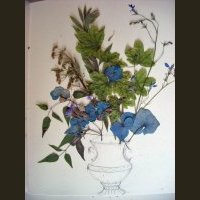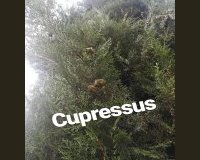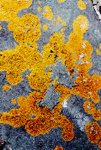accueil site > Paysage et patrimoine > 01. Teaching materials > 03. Secondary school > Life in the Garden:living or non living ?
- 01. Fiches pédagogiques
- 01. Teaching materials
-
02. Jardin sans frontière : une école pour développer les compétences -clés en Europe
- 04. Partenaires
- 05. Rencontres transnationales
- 14. À l’école du jardin. Mobilités de formation dans les jardins d’Europe
- 15. À l’école européenne du jardin. Paroles de formateurs sur leurs formations "entre pairs"
- 16. A l’école auropéenne du jardin. Paroles d’apprenants sur leurs mobilités Erasmus+
- 19. Petit glossaire "européen" du jardin
- 20. Dissémination
- 21. Exploitation locale du projet
- 03. Un nouvel Erasmus+ : Le bleu européen comme étendard contre l’exclusion des adultes
-
09. Erasmus+ partenariato
-
Cammini del Blu in Europa
- 01. Incontri transnazionali
- 05. Progetti blu di partners
- 10. Percorsi europei del Blu
- 20. Storie blu
- 40. Disseminazione
- 43. Transcultural Carpet Blue
- 45. Missive blu
- 46. Glossario blu
- 47. Schede didattiche "Pedagogia del colore blu in Europa"
- 48. Illustrazioni delle schede didattiche : Mostra delle opere degli studenti
-
Giardino senza frontiere. Una scuola per lo slivuppo di competenze chiave in Europa
- 04. Partners
- 05. Riunioni transnazionali
- 14. Alla scuola del giardino. Mobilità di formazione nei giardini d’Europa
- 15. Alla scuola del Giardino. Parole di formatori sul loro addestramento "tra pari"
- 16. Alla scuola del giardino. Parole dei discenti sul loro Erasmus + Mobilità
- 19. Piccolo glossario europeo del giardino
-
Cammini del Blu in Europa
-
11. Erasmus+ Partnership
- 01. Transnational Meetings
- 05. Blue Projects of partners
- 07. European roads of the Blue
- 10. Blue stories
- 40. Dissemination
- 43. Transcultural Carpet Blue
- 45. Blue Missives
- 46. Blue Glossary
- 48. Roads of the blue : the file
- 50. Illustrations of the pedagogic file : exhibition of works of learners
-
51. Garden Without Borders : A School for Developing Key Competences in Europe
- 04. Partners
- 05. Transnational meetings
- 14. At Garden School. Training mobilities in the gardens of Europe
- 15. At Garden School. Words of trainers on their "peer-to-peer" training
- 16. At Garden School. Learners’ words about their mobility Erasmus +
- 19. Small European glossary of the garden
- 20. Dissemination
-
11. Partenariats Erasmus+
-
01. Les chemins du bleu en Europe
- 01. Rencontres transnationales
- 05. Projets bleus des partenaires
- 10. Routes du Bleu en Europe ...
- 20. Histoires Bleues
- 40. Dissémination
- 43. Transcultural Carpet Blue
- 45. Missives bleues
- 46. Glossaire bleu
- 47. Formation pédagogique : fiches pédagogiques et référentiel de compétences clés et transversales
- 50. Illustrations des fiches pédagogiques : exposition des travaux des apprenants
-
01. Les chemins du bleu en Europe
- 12. Pedagogic tools
- 17. Fiches pédagogiques
- 17. Schede Pedagogiche
Paysage et patrimoine
Life in the Garden:living or non living ?dimanche 21 septembre 2008
Life in the Garden:living or non living ? NOTIONAL OBJECTIVES :
To know that the garden, like any environment, is made of :
![]() mineral components (rock, water, gaseous atmosphere)
mineral components (rock, water, gaseous atmosphere)
![]() living beings (animals, plants)
living beings (animals, plants)
![]() manifestation of human activity.
manifestation of human activity.
To know that the distribution of living beings in the garden depends on physical and chemical environment features.
METHOD OBJECTIVES :
![]() to identify in the garden living and non living components
to identify in the garden living and non living components
![]() to measure with a thermometer, a humidity and light measure device
to measure with a thermometer, a humidity and light measure device
![]() to prepare an experiment and interpret the results
to prepare an experiment and interpret the results
MATERIALS :
![]() a box with three compartments you can light up more or less
a box with three compartments you can light up more or less
![]() several dozens of fire bugs and woodlouses collected in the garden
several dozens of fire bugs and woodlouses collected in the garden
PROCEDURES :
Use the worksheet below.
1. Distinguish the living from the non living
During an outing in the garden, observe and list the different elements composing this environment (fauna, flora, rocks, human activity signs…)
Classify the different elements in the table 1
2. Search the different features of the environment
Investigate on the field using the thermometer, the light and humidity measure devices to measure respectively the temperature, the light and the humidity in different areas of the garden. Reporthese measures in the table 2
3. Study the distribution of the living beings according to the environment
The observation of living beings shows they do not seem distributed at random : on a naked stone you never find fern for example but very often lichen.
Photos of lichen on a rock
Prepare an experience showing the habitat preferences of two arthropods : woodlouses and fire bugs.
Put the box (cf. materials) near the light source so as to obtain variable lightings in the three compartments.
Put the fire bugs and the woodlouses in the medium lighted compartment.
After twenty minutes waiting, count the number of woodlouses and fire bugs you find respectively in the three compartments.
From these observations made on the field, what theories can you make about the habitat preference of these arthropods ?
Show the results in a bar chart form and check that the results confirm the theories.
ASSESSMENT :
Capacity for the pupil :
![]() to identify the garden environment elements
to identify the garden environment elements
![]() to conclude that their repartition depends on environment features (humidity, temperature, light and existence or not of a ground corresponding to their preferences.)
to conclude that their repartition depends on environment features (humidity, temperature, light and existence or not of a ground corresponding to their preferences.)
Jean-Michel Josse professeur de Sciences de la Vie et de la Terre, Lycée Français Charlemagne de Pointe Noire, Congo Brazzaville


















 Version imprimable
Version imprimable

